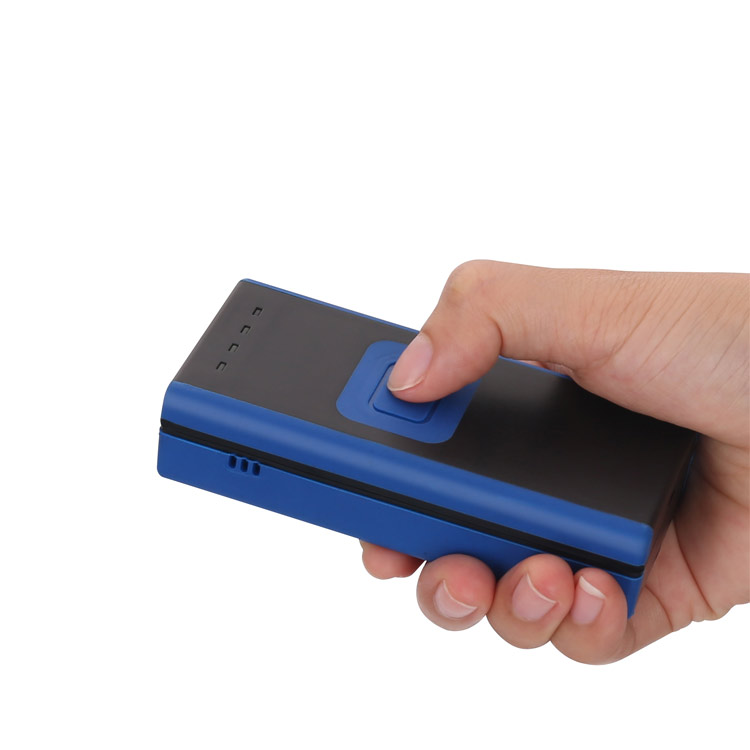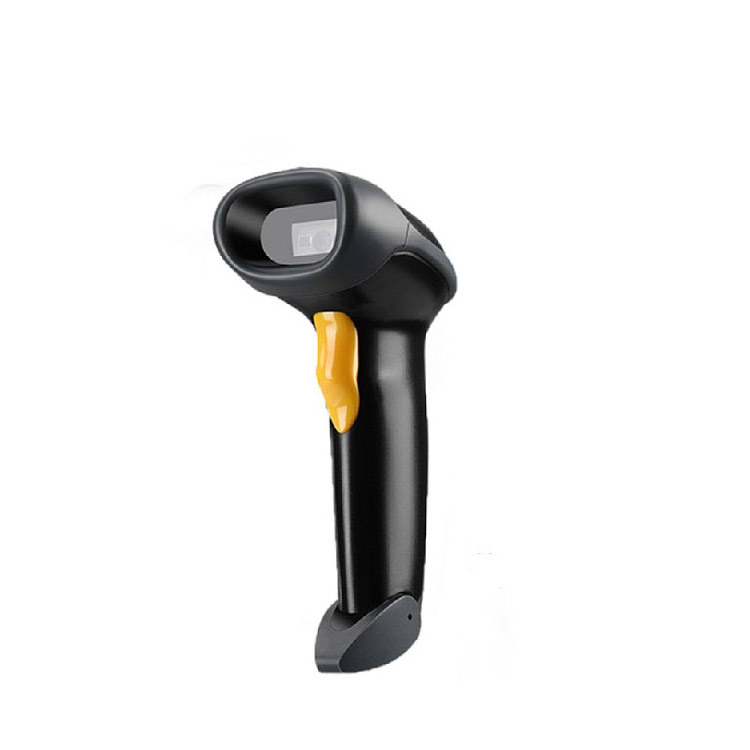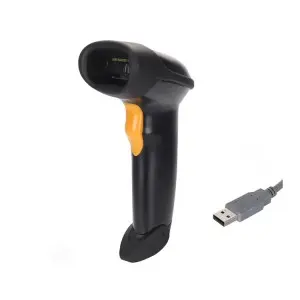There are two general classes of barcodes: one-dimensional (1D or linear) and two-dimensional (2D). They are used in different types of applications, and in some cases are scanned using different types of technology. The difference between 1D and 2D barcode scanning relies on the layout and amount of data that can be stored in each, but both can be used effectively in a variety of automatic identification applications.
1D Barcode Scanning:
Linear or 1D barcodes, like the UPC code commonly found on consumer goods, use a series of variable-width lines and spaces to encode data —what most people probably think of when they hear “barcode.” Linear barcodes hold just a few dozen characters, and generally get physically longer as more data is added. Because of this, users typically limit their barcodes to 8-15 characters.
Barcode scanners read 1D barcodes horizontally. 1D laser barcode scanners are the most commonly used scanners, and typically come in a “gun” model. These scanners do not need to be in direct contact with the 1D barcode to work properly,but typically need to be within a range of 4 to 24 inches to scan.
1D barcodes are dependent on database connectivity to be meaningful. If you scan a UPC code, for instance, the characters in the barcode have to relate to an item in a pricing database to be useful. These barcode systems are a necessity for large retailers, and can help increase inventory accuracy and save time.
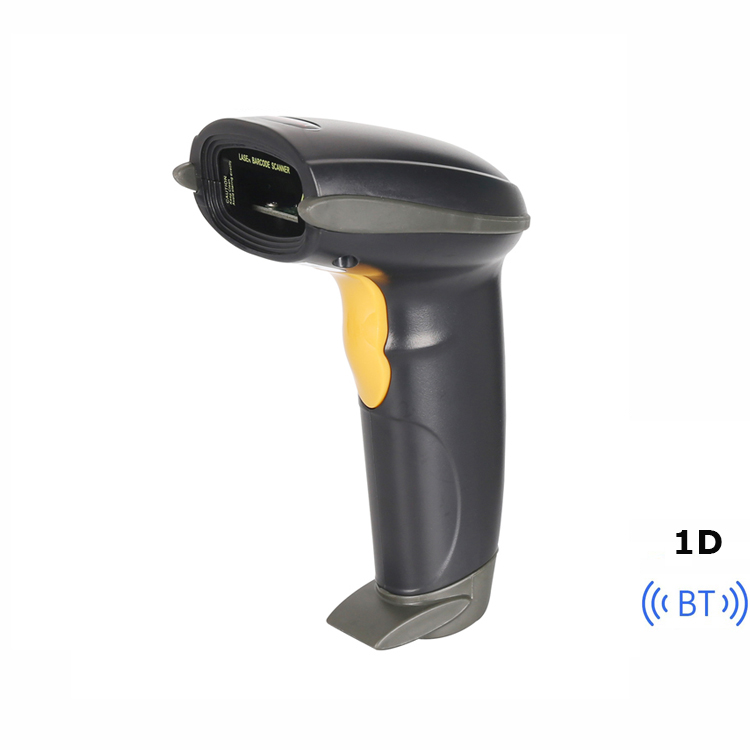
2D Barcode Scanning:
2D barcodes, like Data Matrix, QR Code or PDF417, use patterns of squares,hexagons, dots, and other shapes to encode data. Because of their structure, 2D barcodes can hold more data than 1D codes (up to 2000 characters), while still appearing physically smaller. The data is encoded based on both the vertical and horizontal arrangement of the pattern,thus it is read in two dimensions.
A 2D barcode scanner doesn’t just encode alphanumeric information.These codes can also contain images, website addresses, voice, and other types of binary data. That means you can make use of the information whether you are connected to a database or not. A large amount of information can travel with an item labeled with a 2D barcode scanner.
2D barcode scanners are typically used to read 2D barcodes, although some 2D barcodes, like the commonly-recognized QR code, can be read with certain smartphone apps. 2D barcode scanners can read from over 3 feet away and are available in the common “gun” style, as well as cordless,countertop, and mounted styles. Some 2D bar code scanners are also compatible with 1D barcodes, giving the user more flexibility in how they are used.
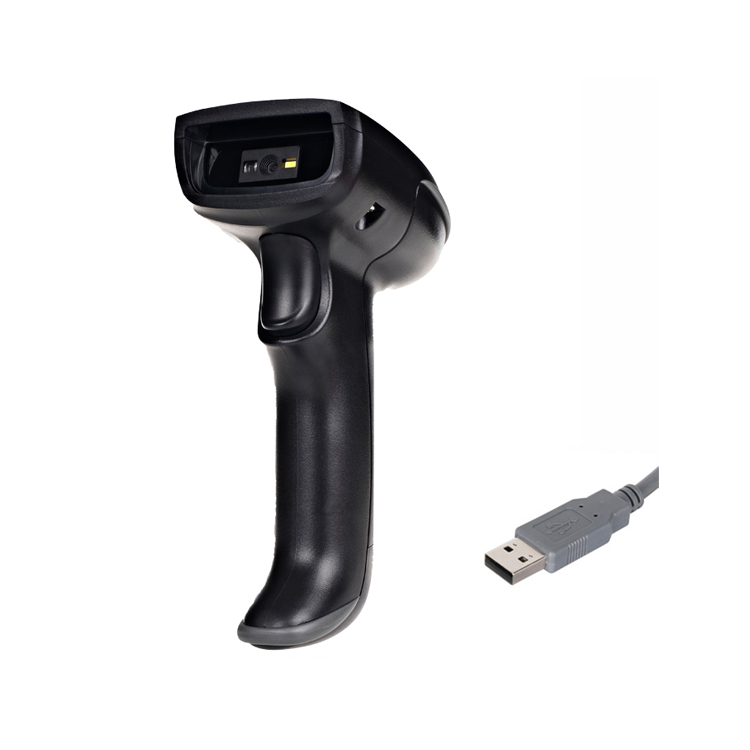
Applications for 1D and 2D Barcode Technology:
1D barcodes can be scanned with traditional laser scanners, or using camera-based imaging scanners. 2D barcodes, on the other hand, can onlybe read using imagers.
In addition to holding more information,2D bar codes can be very small,which makes them useful for marking objects that would otherwise be impractical for 1D barcode labels. With laser etching and other permanent marking technologies, 2D barcodes have been used to track everything from delicate electronic printed circuit boards to surgical instruments.
1D barcodes, on the other hand, are well suited for identifying items that may be associated with other information that changes frequently. To continue with the UPC example, the item the UPC identifies will not change, although the price of that item frequently does; that’s why linking the static data (item number) to the dynamic data (the pricing database) is a better option than encoding price information in the barcode itself.
2D barcodes have increasingly been used in supply chain and manufacturing applications as the cost of imaging scanners has fallen. By switching to 2D bar codes, companies can encode more product data while making it easier to scan items as they move on assembly lines or conveyors — and it can be done without worrying about scanner alignment.
This is especially true in the electronics, pharmaceutical, and medical equipment industries where companies have been tasked with providing a large amount of product tracking information on some very small items. For example, the U.S.FDA’s UDI rules require several pieces of manufacturing information to be included on certain types of medical devices. That data could be easily encoded on very small 2D barcodes.
While there is a difference between 1D and 2D barcode scanning, both types are useful, low-cost methods of encoding data and tracking items.The kind of barcode (or combination of barcodes) you select will depend on the specific requirements of your application, including the type and amount of data you need to encode, the size of the asset/item, and how and where the code will be scanned.
If you have any interest or query during the selection or use of any bar code scanner, welcome to contact us! MINJCODE is committed to the research and development of bar code scanner technology and application equipment, our company has 14 years of industry experience in the professional fields, and has been highly recognized by the majority of customers!
If You Are in Business, You May Like
Recommend Reading
Post time: Mar-24-2023


